Farming in Virginia
The nation’s farmers are getting older and the number of farms in the U.S. is falling, according to the USDA’s Census of Agriculture (“Ag Census”). These trends have garnered widespread attention in recent years. In 2023, the U.S. Senate Special Committee on Aging released a report that raised concerns regarding these trends. Interest redoubled following the release of the 2022 Ag Census early last year, prompting coverage from the American Enterprise Institute, Bloomberg, NPR, CBS, and others.
National reporting varies, but two key themes emerge: uncertainty about the seemingly shrinking agriculture sector’s ability to sustain a growing population and concern for the rural communities that rely on farming. State coverage is far more limited. As such, this blog post will explore how these broader issues play out in Virginia.
Older Farmers & Fewer Farms
Virginia counted 67,798 farmers in the 2022 Ag Census, which marks a four percent decline from the previous Ag Census (2017). The average age of Virginia’s farmers increased from 58.5 in 2017 to 59.2 in 2022, which marked the continuation of a more than four-decade long trend.
Figure 1 compares the age distribution of farmers in 2002 and 2022. While the share of the state’s youngest farmers remained stable, the 35-44 and 45-54 age cohorts were noticeably less represented in 2022. Perhaps most notably, the share of farmers aged 65 and older increased by 16 percentage points over the past two decades.
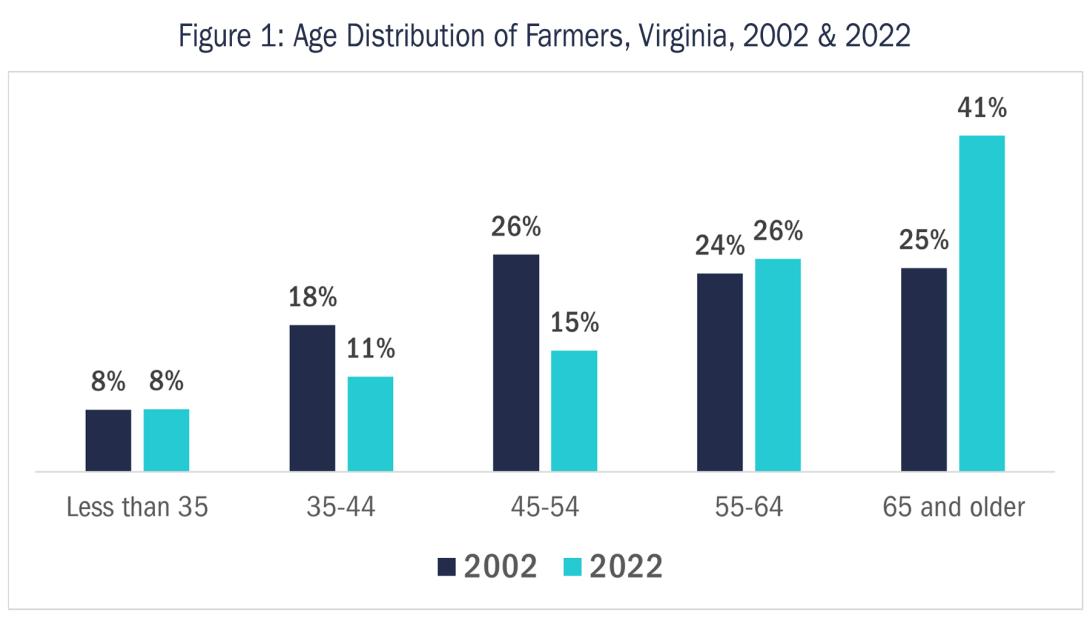
More than 80 percent of Virginia’s farmers own or operate small farms—those that generate less than $50,000 in annual sales. In 2022, Virginia counted 38,995 farms, 83 percent of which were small.
The number of farms in Virginia fell by 18 percent from 2002 to 2022, primarily due to sharp losses in small farms. Decline in the number of farms accelerated in recent years, with nearly half of the losses since 2002 occurring between 2017 and 2022.
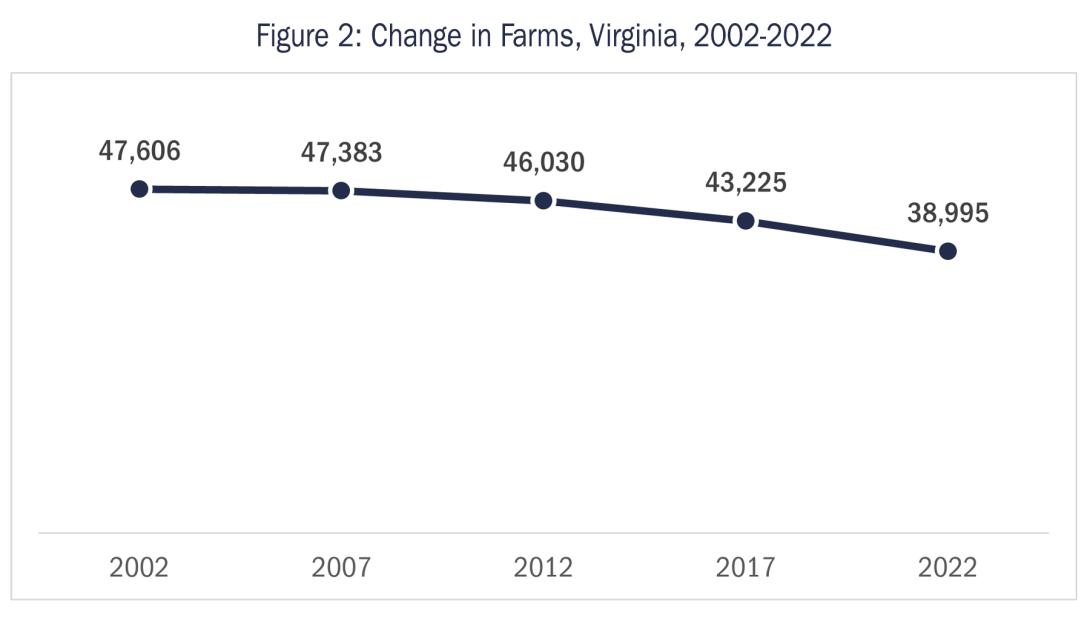
Increased Output & Consolidation
Despite an aging workforce and decline in farmers and farms, Virginia’s inflation-adjusted agricultural sales (referred to as “output” in this post) increased by 16 percent from 2017 to 2022.
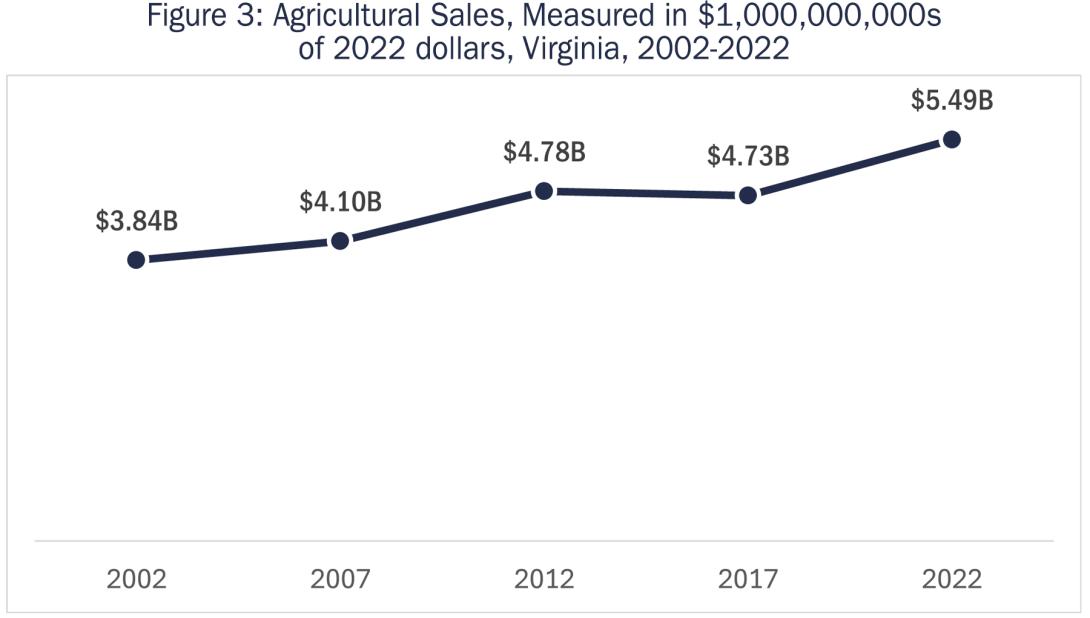
The combination of these trends is perhaps counterintuitive, as one would expect output to decline alongside losses in farmers and farms. This apparent incongruency, however, points to a structural shift in agricultural production.
Economies of scale, technological advances, and greater access to capital have enabled large, highly efficient farms to increase production and consolidate a greater share of total agricultural output. Consequently, smaller farms are struggling to compete with their larger counterparts, leading many to exit the industry altogether.
Figure 4 highlights this trend. Although only 4.5 percent of Virginia’s farms generated $1 million or more in annual sales, these million-dollar farms (MDFs) accounted for 72 percent (approximately $4 billion) of the state’s total output in 2022—more than double their 32 percent share of output in 2002. In contrast, farms generating less than $50,000 represented 83 percent of the state’s farms and contributed five percent of total output in 2022, down from 12 percent in 2002.
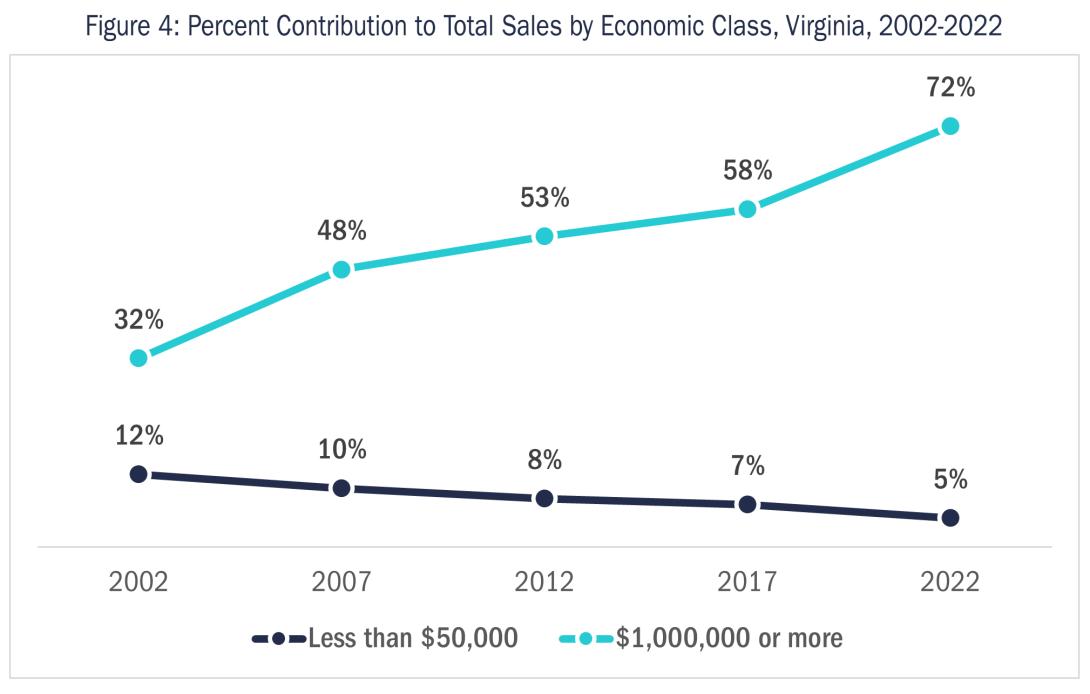
Divergent Trends
It’s important to consider how individual groups shape an overall picture. In cases where one group is dominant, overall trends will largely reflect the experiences and patterns of this group.
This consideration is especially important for this topic, where the vast majority of Virginia’s farms are small and most farmers own and/or operate these farms. As such, the overall narrative about aging and losses in farmers and farms mostly describes small farms. What is true for most farms, however, is not true for all. For example, Virginia’s count of MDFs grew by 43 percent from 2017 to 2022, accompanied by a 42 percent increase in farmers on MDFs during the same period. These changes strike a stark contrast to the statewide trends detailed above.
Aging is another area where MDFs increasingly stand apart from the state. From 2017 to 2022, MDFs saw 54 percent growth in the number of farmers younger than 35—an age group that is crucial to the resiliency of the agricultural sector. This growth, paired with a 45 percent uptick in farmers aged 35-44, boosted the representation of younger farmers on MDFs. Meanwhile, statewide losses in younger age cohorts during the same period contributed to the disproportionate representation of farmers aged 65 and older shown in figure 5.
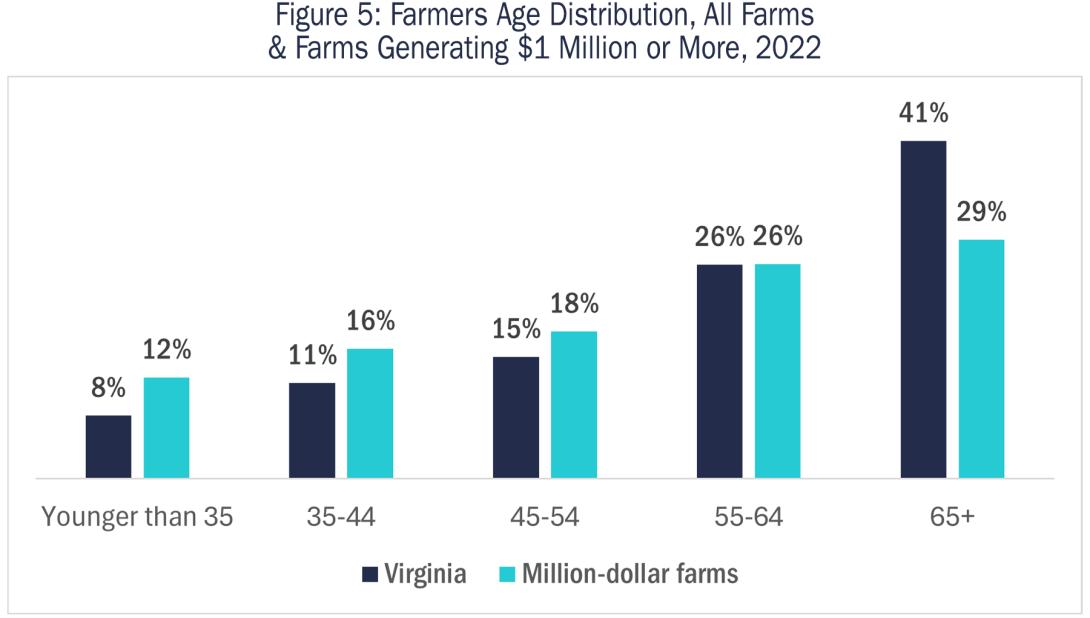
Conclusion
The U.S. will grow by nearly 40 million people over the next three decades. Anxiety around aging in agriculture is understandable considering that today’s youngest farmers will be responsible for feeding the nation’s –and to a degree the world’s—growing population.
Reporting on this topic tends to focus on aging and losses in farmers and farms in isolation. This blog post, however, suggests that these trends are symptoms of a broader, nationwide shift toward consolidation.
High-output farms—especially MDFs—represent the direction of mainstream agriculture, where a select number of specialized, highly efficient farms generate the lion’s share of agricultural output. Changes in high-output farms run almost entirely counter to overall demographic and farm trends. Namely, these farms are growing in number, and perhaps most crucially, attracting a younger workforce.
Meanwhile, small farms are emblematic of a waning era of agriculture, in which farms of varying sizes made more balance contributions to output. Consolidation in the agricultural sector makes it difficult for small farms to compete with their larger counterparts. This pressure has driven many small farms out of the industry. Remaining farms are overwhelmingly operated by farmers at or approaching retirement age and the pool of younger farmers set to succeed them has shrunk in recent years.
This nuance makes concerns about the food supply and production seem misplaced. MDFs are in comparatively good health and have enabled Virginia—and the U.S. more broadly—to produce more with fewer farms. Meanwhile, the small farms that form the basis of the Commonwealth’s long tradition of agriculture are struggling in an increasingly consolidated agricultural landscape. As such, anxiety is far more justifiable for Virginia’s many rural families and communities that rely on small farm income.


